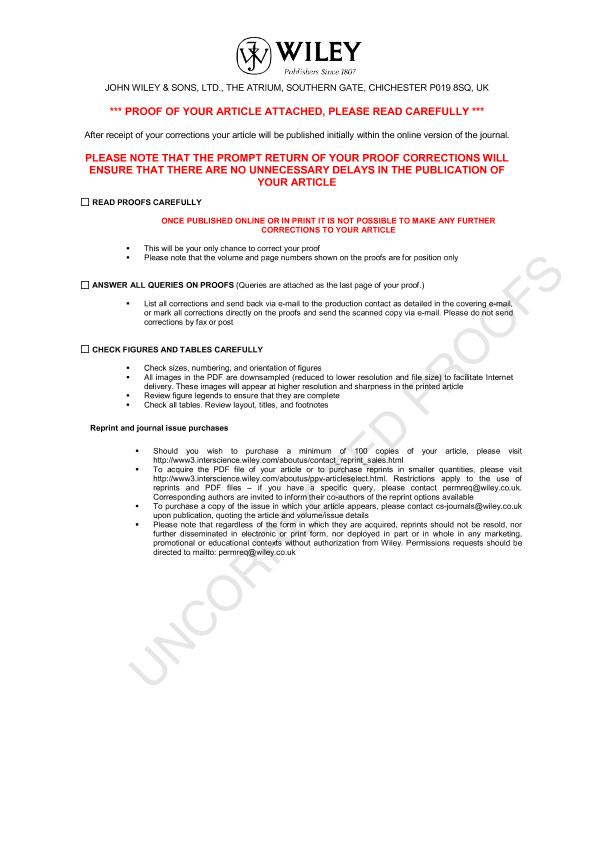Mostrar el registro sencillo del ítem
dc.contributor.author
Rival, C.
dc.contributor.author
Theas, Maria Susana

dc.contributor.author
Suescun, Maria Olga

dc.contributor.author
Jacobo, Patricia Verónica

dc.contributor.author
Guazzone, Vanesa Anabella

dc.contributor.author
van Rooijen, N.
dc.contributor.author
Lustig, Livia

dc.date.available
2020-05-12T22:11:58Z
dc.date.issued
2008-01-22
dc.identifier.citation
Rival, C.; Theas, Maria Susana; Suescun, Maria Olga; Jacobo, Patricia Verónica; Guazzone, Vanesa Anabella; et al.; Functional and phenotypical characteristics of testicular macrophages in experimental autoimmune orchitis; John Wiley & Sons Ltd; Journal of Pathology; 215; 2; 22-1-2008; 108-117
dc.identifier.issn
0022-3417
dc.identifier.uri
http://hdl.handle.net/11336/104978
dc.description.abstract
Testicular inflammation with compromised fertility can occur despite the fact that the testis is considered an immunoprivileged organ. Testicular macrophages have been described as cells with an immunosuppressor profile, thus contributing to the immunoprivilege of the testis. Experimental autoimmune orchitis (EAO) is a model of organ-specific autoimmunity and testicular inflammation. EAO is characterized by an interstitial inflammatory mononuclear cell infiltration, damage to the seminiferous tubules and germ cell apoptosis. Here we studied the phenotype and functions of testicular macrophages during the development of EAO. By stereological analysis, we detected an increased number of resident (ED2+) and nonresident (ED1+) macrophages in the testicular interstitium of rats with orchitis. We showed that this increase was mainly due to monocyte recruitment. The in vivo administration of liposomes containing clodronate in rats undergoing EAO led to a reduction in the number of testicular macrophages, which correlated with a decreased incidence and severity of the testicular damage and suggests a pathogenic role of macrophages in EAO. By immunohistochemistry and flow cytometry we detected an increased number of testicular macrophages expressing MHC class II, CD80 and CD86 costimulatory molecules in rats with orchitis. Also, testicular macrophages from rats with EAO showed a higher production of IFNγ (ELISA). We conclude that testicular macrophages participate in EAO development, and the ED1+ macrophage subset is the main pathogenic subpopulation. They stimulate the immune response through the production of pro-inflammatory cytokines and antigen presentation and thus activation of T cells in the target organ.
dc.format
application/pdf
dc.language.iso
eng
dc.publisher
John Wiley & Sons Ltd

dc.rights
info:eu-repo/semantics/openAccess
dc.rights.uri
https://creativecommons.org/licenses/by-nc-sa/2.5/ar/
dc.subject
TESTICULAR MACROPHAGES
dc.subject
AUTOIMMUNE ORCHITIS
dc.subject
MHC II MOLECULES
dc.subject
COSTIMULATORY MOLECULES
dc.subject
CYTOKINES
dc.subject
TESTOSTERONE
dc.subject
FSH
dc.subject
LH
dc.subject.classification
Inmunología

dc.subject.classification
Medicina Básica

dc.subject.classification
CIENCIAS MÉDICAS Y DE LA SALUD

dc.title
Functional and phenotypical characteristics of testicular macrophages in experimental autoimmune orchitis
dc.type
info:eu-repo/semantics/article
dc.type
info:ar-repo/semantics/artículo
dc.type
info:eu-repo/semantics/publishedVersion
dc.date.updated
2020-05-11T15:49:08Z
dc.identifier.eissn
1096-9896
dc.journal.volume
215
dc.journal.number
2
dc.journal.pagination
108-117
dc.journal.pais
Reino Unido

dc.journal.ciudad
London
dc.description.fil
Fil: Rival, C.. Universidad Nacional de Buenos Aires. Facultad de Medicina. Centro de Investigaciones en Reproducción; Argentina
dc.description.fil
Fil: Theas, Maria Susana. Consejo Nacional de Investigaciones Científicas y Técnicas. Centro Científico Tecnológico Conicet - La Plata. Instituto Multidisciplinario de Biología Celular. Provincia de Buenos Aires. Gobernación. Comisión de Investigaciones Científicas. Instituto Multidisciplinario de Biología Celular. Universidad Nacional de La Plata. Instituto Multidisciplinario de Biología Celular; Argentina
dc.description.fil
Fil: Suescun, Maria Olga. Consejo Nacional de Investigaciones Científicas y Técnicas. Centro Científico Tecnológico Conicet - La Plata. Instituto Multidisciplinario de Biología Celular. Provincia de Buenos Aires. Gobernación. Comisión de Investigaciones Científicas. Instituto Multidisciplinario de Biología Celular. Universidad Nacional de La Plata. Instituto Multidisciplinario de Biología Celular; Argentina
dc.description.fil
Fil: Jacobo, Patricia Verónica. Consejo Nacional de Investigaciones Científicas y Técnicas. Centro Científico Tecnológico Conicet - La Plata. Instituto Multidisciplinario de Biología Celular. Provincia de Buenos Aires. Gobernación. Comisión de Investigaciones Científicas. Instituto Multidisciplinario de Biología Celular. Universidad Nacional de La Plata. Instituto Multidisciplinario de Biología Celular; Argentina
dc.description.fil
Fil: Guazzone, Vanesa Anabella. Consejo Nacional de Investigaciones Científicas y Técnicas. Centro Científico Tecnológico Conicet - La Plata. Instituto Multidisciplinario de Biología Celular. Provincia de Buenos Aires. Gobernación. Comisión de Investigaciones Científicas. Instituto Multidisciplinario de Biología Celular. Universidad Nacional de La Plata. Instituto Multidisciplinario de Biología Celular; Argentina
dc.description.fil
Fil: van Rooijen, N.. University Medical Centre; Países Bajos
dc.description.fil
Fil: Lustig, Livia. Consejo Nacional de Investigaciones Científicas y Técnicas. Centro Científico Tecnológico Conicet - La Plata. Instituto Multidisciplinario de Biología Celular. Provincia de Buenos Aires. Gobernación. Comisión de Investigaciones Científicas. Instituto Multidisciplinario de Biología Celular. Universidad Nacional de La Plata. Instituto Multidisciplinario de Biología Celular; Argentina
dc.journal.title
Journal of Pathology

dc.relation.alternativeid
info:eu-repo/semantics/altIdentifier/url/https://onlinelibrary.wiley.com/doi/abs/10.1002/path.2328
dc.relation.alternativeid
info:eu-repo/semantics/altIdentifier/doi/http://dx.doi.org/10.1002/path.2328
Archivos asociados
